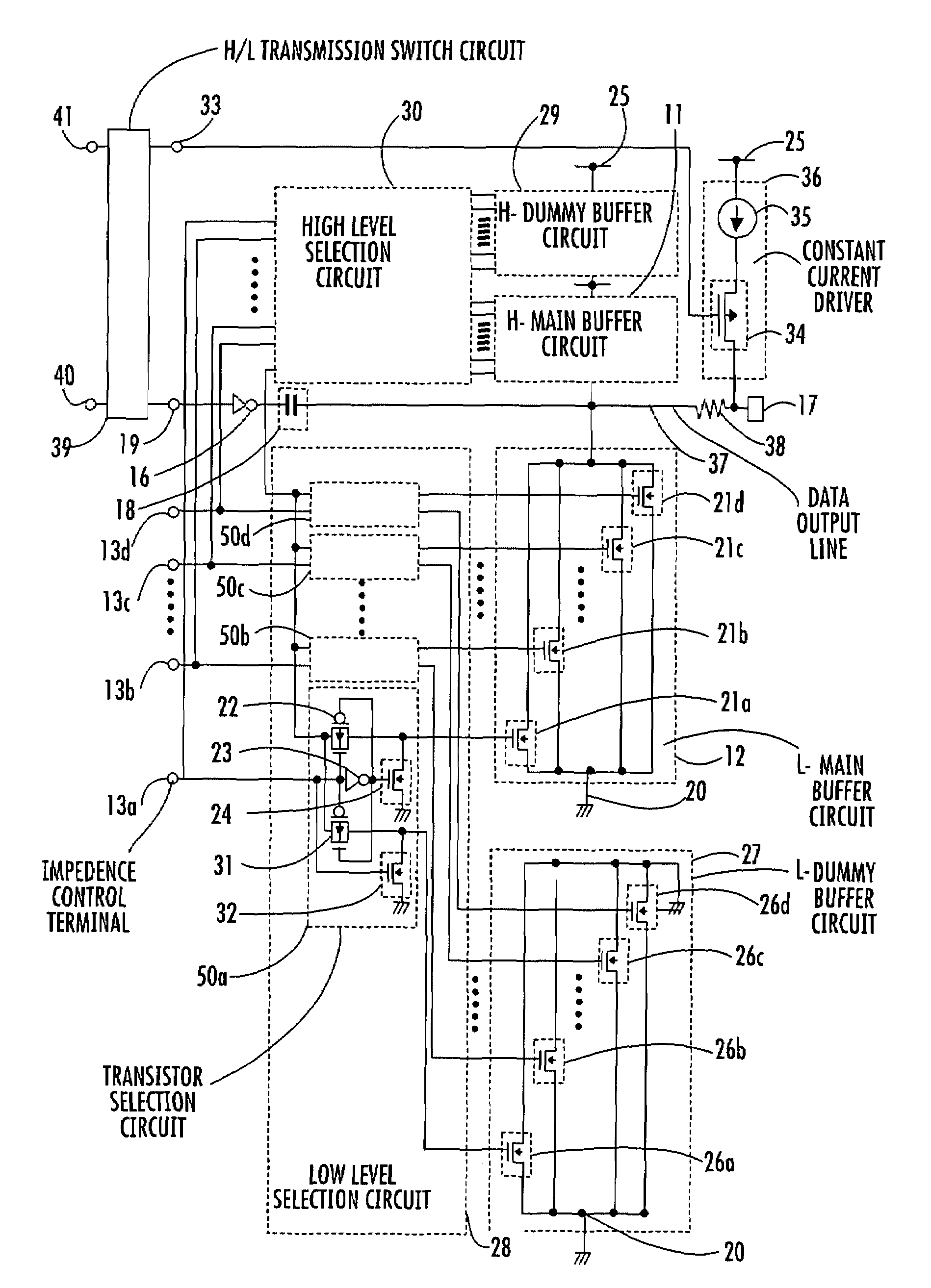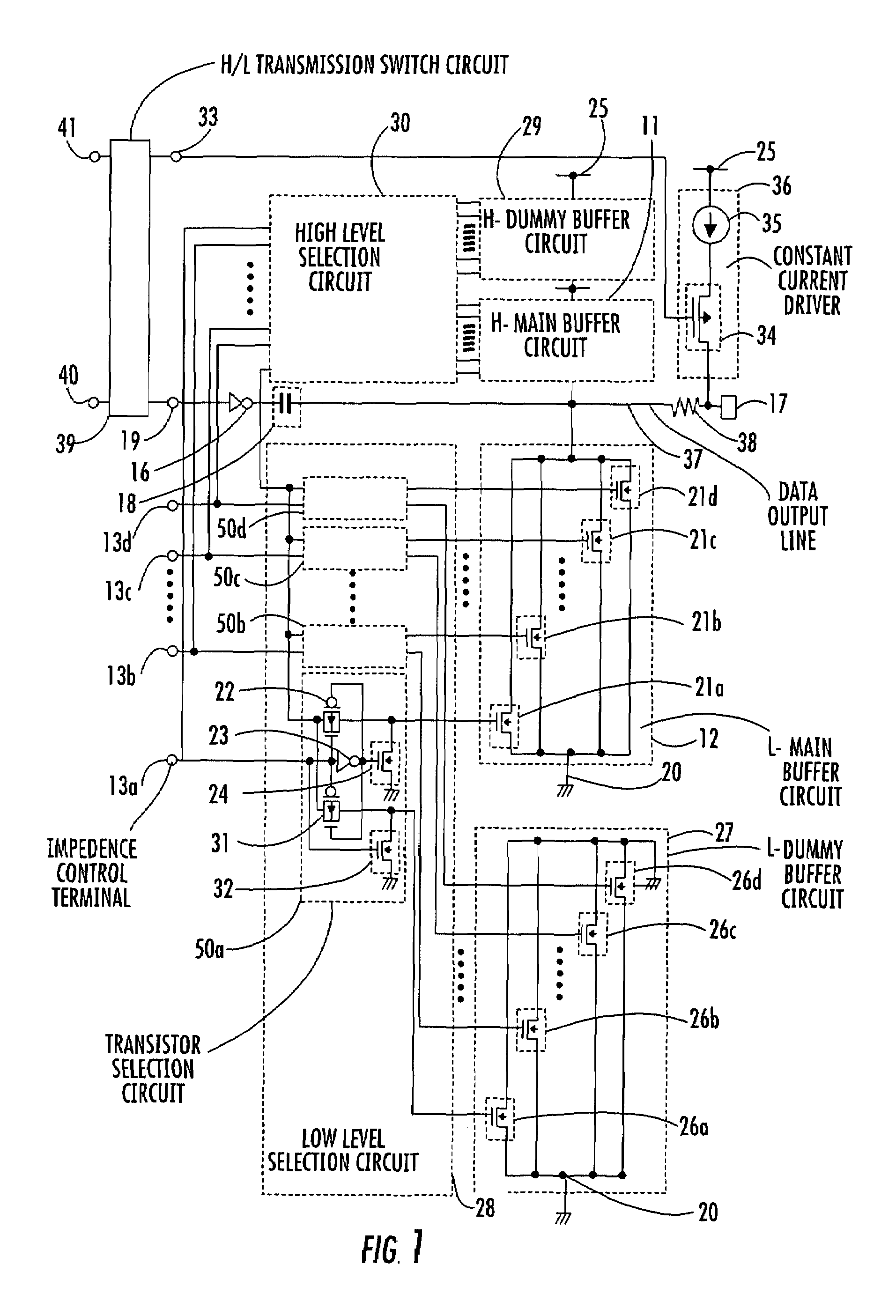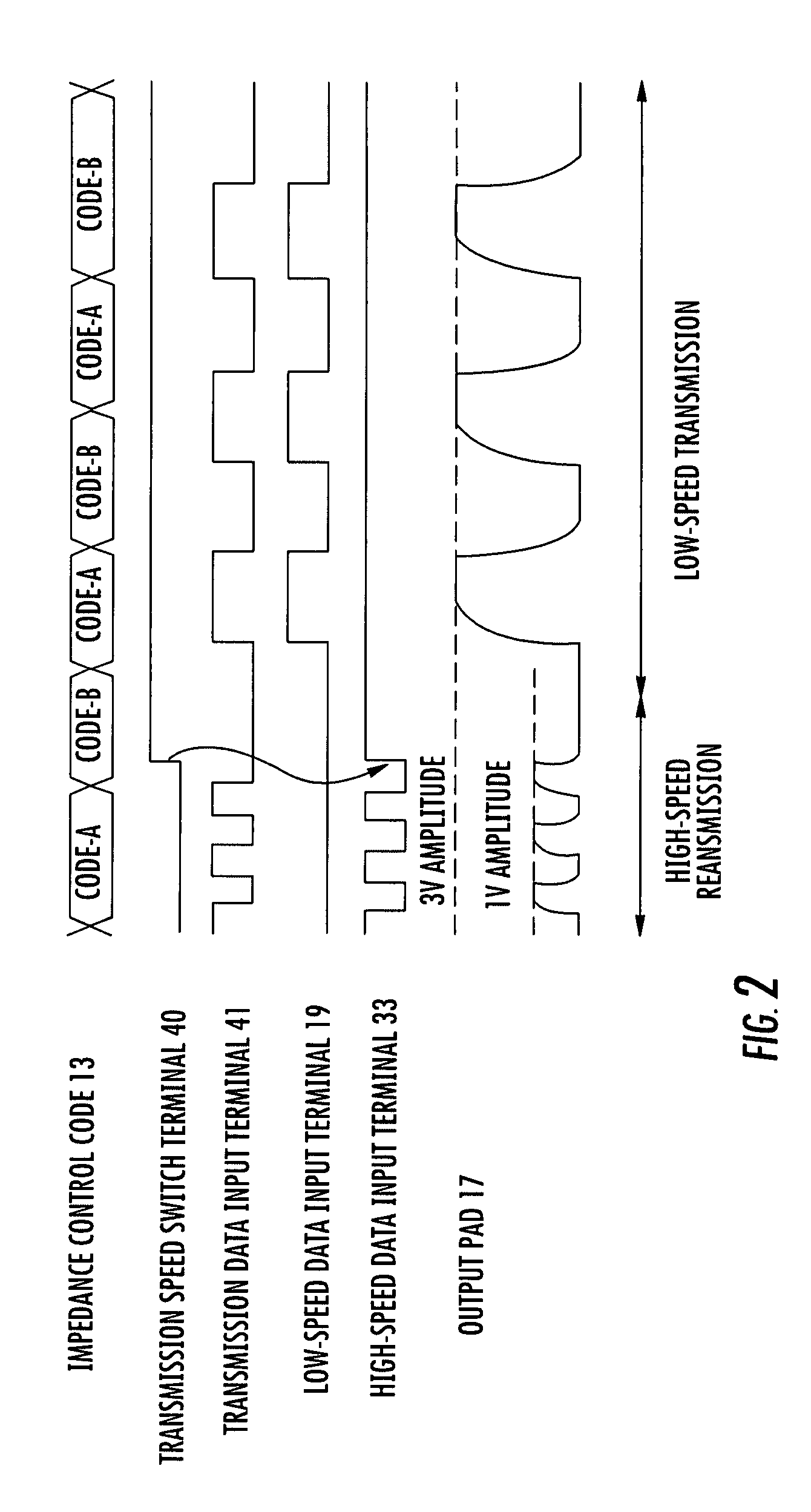Data transmission circuit and data transmission method with two transmission modes
- Summary
- Abstract
- Description
- Claims
- Application Information
AI Technical Summary
Benefits of technology
Problems solved by technology
Method used
Image
Examples
Embodiment Construction
[0063]In the following, a preferred embodiment of the present invention will be explained in detail with reference to the drawings.
[0064]First, the configuration of data transmission circuit according to a preferred embodiment of the present invention will be described hereinbelow with reference to FIG. 1. FIG. 1 schematically shows a configuration example of a data transmission circuit according to the present embodiment, comprising an output buffer circuit employing a CMOS push / pull type constant voltage driver for low-speed transmission, and an output buffer circuit employing a constant current driver for high-speed transmission. The figure shows a substantial part of the data transmission circuit. The data transmission circuit according to the present embodiment is effective when applied to the output buffer of a USB 2.0 controller, for example. The data transmission circuit uses a constant current driver in higher speed data transmission with the transfer rate of 480 Mbps, and ...
PUM
 Login to View More
Login to View More Abstract
Description
Claims
Application Information
 Login to View More
Login to View More - R&D
- Intellectual Property
- Life Sciences
- Materials
- Tech Scout
- Unparalleled Data Quality
- Higher Quality Content
- 60% Fewer Hallucinations
Browse by: Latest US Patents, China's latest patents, Technical Efficacy Thesaurus, Application Domain, Technology Topic, Popular Technical Reports.
© 2025 PatSnap. All rights reserved.Legal|Privacy policy|Modern Slavery Act Transparency Statement|Sitemap|About US| Contact US: help@patsnap.com



